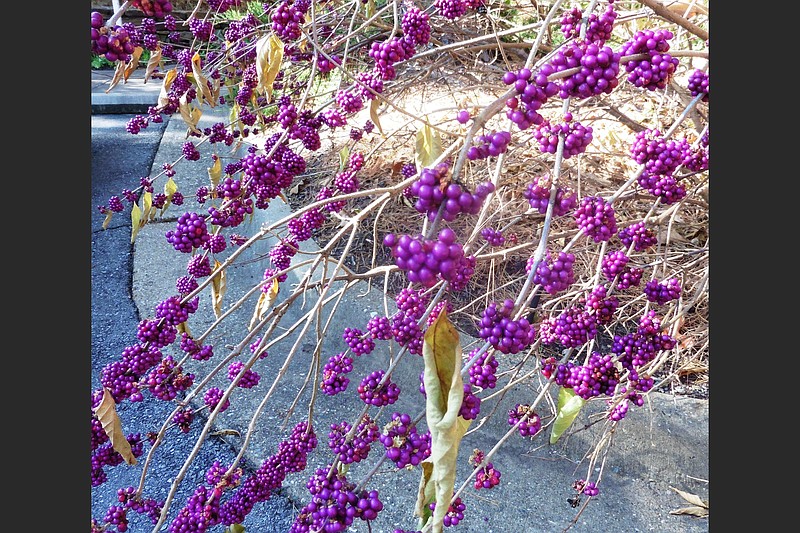NOVEMBER
Fall is officially here and we have weather to prove it.
The temperatures have really dropped, and the signs of fall are everywhere. We are getting some great color on some trees, while others are dropping leaves at a fast rate. Spring- and summer-blooming perennial plants are beginning to go dormant, while fall perennials are blooming.
◼️ Cut back the foliage on your perennials that are dying back. Rake up any damaged leaves and put down a fresh layer of mulch.
◼️ The winter hellebores are waking up and putting on new foliage. Clean up the old leaves to keep them looking their freshest.
◼️ We have a few summer annuals that are still doing great, while many are on their way out. Pull up your spent plants and replace with winter color. There are many options to choose from, including lots of varieties of pansies, violas and panolas (a cross between a pansy and a viola). There are also dianthus and snapdragons, dusty miller and a whole host of leafy color. Flowering kale and cabbage, giant red mustards, along with edible greens are all available. Most years, these plants give us non-stop color all fall, winter and early spring.
◼️ More and more gardeners add a range of pumpkins and gourds to their outside decor each fall. Most will usually last through Thanksgiving and even beyond. But many people are complaining of pumpkins rotting earlier than normal. Some of these rotten pumpkins might have been overripe to begin with, but some of the heavy storms we had could also have damaged them. Heavy rain will cause them to break down faster. If they are still firm on the outside with a good stem, they can last for a month or more.
◼️ Leaves are falling fast and furious. As they begin to fall, a lawn mower can handle them fairly easily. Once they pile up, you will have to rake and remove them manually. Heavy layers of leaves left on the lawn all winter can damage lawn grass, so the sooner you remove them, the better. Shredded leaves make a wonderful mulch for vegetable gardens and flower beds. Whole leaves tend to pack down too well and aren't as good.
◼️ By now, most people have turned on their heaters inside the house. That means all the tender houseplants and tropical plants you hope to overwinter indoors should have made the move inside several weeks ago. While we have not had a killing frost, we have had some nippy nights. Tender plants exposed to cold temperatures will shed leaves in earnest once they move inside. Give your plants more light inside and way less water. Check for any insect problems that you might have moved indoors with the plants.
◼️ The cooler temperatures will help cool off the soil, making it a good time to plant spring-blooming bulbs. There are many options available. If you are looking for plants that will come back year after year, consider daffodils and crocus for sunny areas; and plant wood hyacinths, bluebells and snowdrops in your shady beds. Alliums are gaining in popularity and come in a wide range of mature sizes. Tulips are showstoppers but better grown as annuals in Arkansas. Plant your bulbs roughly 2-3 times as deep as their size. Make sure the beds are well-drained.
◼️ Home vegetable gardening is in full swing with cool-season crops. Harvest has been ongoing with lettuces, radishes and spinach. Broccoli and kale are not far behind. You can still plant more winter vegetables for a later harvest. Having some covers handy for particularly low temperatures can keep your plants producing all winter long.
◼️ If you need new ornamental or shade trees in your yard, November is the ideal month to plant a tree. Soils still have some residual warmth. The trees are going dormant so they don't need as much food and water as they do when they have leaves to keep healthy, and they can begin the process of establishing roots. This will give your trees a much-needed boost before the growing season begins next spring. Make sure you know something about mature height, and look up — don't plant under power lines.
PLANT OF THE MONTH

Callicarpa americana is commonly called beautyberry or French mulberry. This native deciduous shrub shines in the fall and early winter garden.
Callicarpa is a multi-trunked plant that will grow up to 6 or 8 feet tall and wide. It will bloom best in full sun but can also have attractive fruits in partial shade.
In the summer it produces small clusters of pale pink blooms that encircle the stems up and down the branches. These small blooms are followed by clusters of green berries, which mature into bright purple berries. There are some white berried forms as well.
The berries can persist well after the leaves have shed.
The leaves on many plants turn yellow before they shed, which adds to the beauty of this plant in the fall.
It blooms on the new growth, so you can prune your plant to whatever size you prefer before new growth begins in the spring.
Read Janet Carson's blog at arkansasonline.com/planitjanet.
